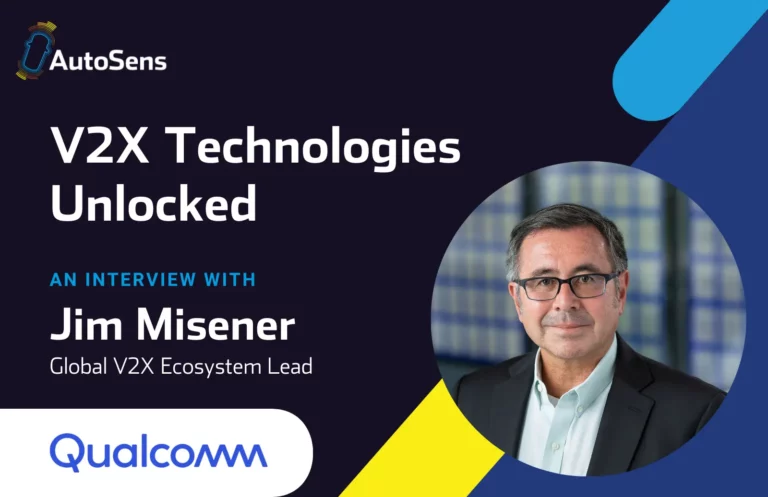We’re joined by Janos Golumba, MDO Engineer/Data Scientist and Aleksander Spychala, Automotive ADAS Software Engineer. Janos and Aleksander discuss their work as part of Ford Motor Company, their experience and Ford’s new Predictive Dynamic Bending Light’s feature. AI-in-the-loop optimisation of this feature will be explored in their session on 16 September as part of our AutoSens in Brussels edition.
Janos, what is the role of the Multidisciplinary Design Optimization (MDO) Team at Ford?
Our Team is integrated into the Body Engineering Department where we are in close relationship with CAD D&Rs and CAE Teams, such as SAFETY, NVH and DURABILITY.
With the capabilities of conducting several type of optimization tasks within the Department we can support standard Gauge&Grade Optimization Tasks within BiW. Also, lately there are more topics like Spotweld joining, Adhesive Sealer and Topology in case of Closures being requested. We are in the role to apply CAE Team validations by incorporating Design and Manufacturing constraints. Resulting optimized structural features that are normally planned to be implemented into the next phase of the actual vehicle development cycle.
What do you see as more important in simulation, machine learning or reinforcement learning?
By taking into account the normal CAE Engineer daily working tasks, I would say applied machine learning would be the present/future key in highly automated post-processing of different CAE Simulations and combining the data for later Meta-modeling processes. Finally, setting up Optimizations with different Scenarios to deliver the desired settings is a part of a bigger process that usually can be done by experienced Data Scientists/MDO Engineers with the in-depth knowledge required for the Project we are dealing with.
Applications of reinforcement learning in CAE Simulations would be a challenging task today, but as we evolve, the ML and AI field goes with it or maybe other way round nowadays. However, that would be more interesting to see whether there are intentions and trials to do amazing things with reinforcement learning in combination of CAE Product development.
Aleksander, you completed an engineering internship in Kenya, what did this involve?
As a university student I went to Kenya for a summer internship, during which I worked as a research assistant at Jomo Kenyatta University of Agriculture and Technology. I worked on a project using a laser CNC machine for producing printed circuit boards. My time in Africa was an amazing and life-changing experience, where I developed as an engineer, but this was only a part of the whole adventure. I met fantastic people, made life-long friendships, experienced absolutely stunning nature and learned a lot. I am looking forward to coming back to Kenya soon, once the coronavirus is contained.
You are Ford’s Predictive Dynamic Bending Light’s feature owner and will discuss how you have been employing AI methods to improve the on-road feature performance. Without giving too much away, why is AI-in-the-loop an effective method to optimise performance?
The nature of the system requires plenty of on-road test drives performed at night time, which significantly limits the possible scope of verified parameters and the test coverage. The human fatigue factor comes into play as well, when you work at night. Employing AI to support the development either on a PC where you can simulate and analyse the predictive lighting feature on pre-recorded tracks, or in vehicle where you don’t necessarily need specialised engineers to be in the car any more, strongly increases the engineering efficiency and the room where you search for further performance improvements. This way, the AI can narrow down the search area and suggest to us certain feature settings, which we can then focus on and validate during our on-road tests.
Designers vs. engineers: How can the right mix of sensors be incorporated aesthetically?
This is an amazing interdisciplinary challenge and a field which I’d be expecting to be surprising us with designers’ creativity in the coming years. Given the current instrumentation including cameras and radars and the future advancements concerned with driverless vehicles and Vehicle-To-X communication, there will be a big field for styling designers to implement all the various devices in a smart-looking fashion, but also a big field for research optimising the devices’ positions, so they fulfil their roles, as well as geometries for optimising aerodynamics, which is vital for energy efficiency. Finding a good balance between all the factors will be a great and exciting challenge! In our energy rooms, it is already a daily routine that our designers and engineers work very closely hand in hand.
Is validation by shadow driving a key enabler for L4 or a dangerous public test?
As much as this appears as a tempting and promising approach, I would refrain from calling it a key enabler. The multitude of different and absolutely unique real-life scenarios make it an extremely unpredictable task to cover all possible road situations. Not only could shadow driving incorrectly recognise seemingly similar events, but it could also learn bad habits from human drivers.







